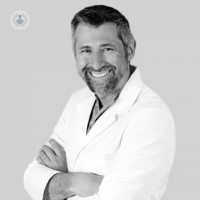Surgery as an option to stop sleep apnea
Written by:Sleep apnea is a disorder in which the person suffering from it has several episodes of airway obstruction that can produce real breathing pauses ( apneas ) during deep sleep.. This is due to the fact that during certain phases of sleep, all the musculature, including that of the throat, is more relaxed. In the case of patients with this disorder, what happens is that the muscles that must keep the airway open, when losing tone, are not able to do correctly, causing the tongue, soft palate, etc., to fall back blocking the airway.
If this situation lengthens in time it ends up deteriorating the quality of life of the patient, it produces arterial hypertension, makes people more susceptible to the development of cardiovascular and cerebrovascular diseases , and many other consequences.

When sleep apnea is intensive, it must be treated directly. Today, the treatment of choice is CPAP , a mask that the patient is placed on a constant nightly basis during nighttime sleep and that inflates a positive air pressure in the airway thus preventing collapse.. It is an effective measure in most cases, but it can be very uncomfortable, so many patients do not tolerate it and abandon the treatment.
However, the only definitive treatment of obstructive sleep apnea is surgery , especially indicated in all those cases that do not tolerate CPAP or in patients who travel a lot and have difficulty sleeping with the machine every day.. You can choose two types of surgical techniques depending on where the obstruction is located: those that remove tissue where there may be obstruction (tonsils, vegetations, nasal surgery, surgery of the palate, etc.) or those that widen the continent, ie , increase the caliber of the airway by moving structures. In this sense the most used technique is an orthognathic surgery with which we advance the upper jaw, the jaw and the musculature of the base of the tongue, in order to leave enough space in the back of the oral cavity to avoid obstruction when the patient sleeps.


